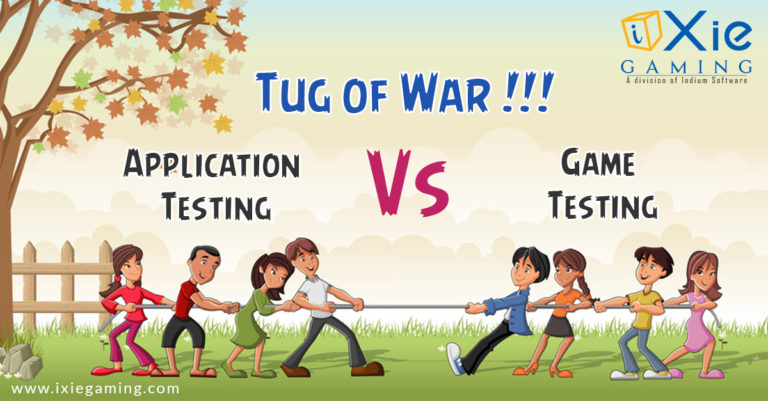Introduction:
As technology continues to advance, the world of gaming has experienced rapid growth and innovation. With the increasing complexity of video games, the need for efficient and effective testing methods becomes paramount. In recent years, game testing automation has emerged as a promising solution for testing games. This blog explores the concept of game automation, its potential benefits, challenges, and its role in shaping the next generation of testing in the gaming industry.
Understanding Game Automation:
Game automation refers to the use of software tools and scripts to perform automated tests on video games. It involves simulating player actions, such as button presses, mouse movements, and keyboard inputs, to evaluate different aspects of game performance, functionality, and compatibility. Game automation tools can also collect data, generate reports, and identify bugs or issues that need to be addressed by game developers.
Benefits of Game Automation Testing:
I. Increased Efficiency:
Automated game testing allows for the execution of repetitive and time-consuming tests without the need for manual intervention. It can cover vast areas of gameplay, including specific scenarios and edge cases, at a much faster pace compared to manual testing. This efficiency enables game developers to identify and fix bugs promptly, saving valuable time during the development cycle. Moreover, automation can run tests simultaneously on multiple devices and platforms, ensuring thorough coverage and reducing the overall testing time.
II. Improved Test Coverage:
Manual testing can be limited by human capacity, attention span, and potential oversight. Game automation testing can provide broader test coverage by running multiple tests simultaneously or sequentially. It can also perform stress testing, load testing, and long-duration tests, which would be challenging for manual testers to execute consistently. Automation ensures that a wide range of game features, mechanics, and interactions are thoroughly tested, increasing the likelihood of detecting potential issues before the game’s release.

III. Consistency and Repeatability:
Game automation testing ensures consistency and repeatability of tests, reducing human error and variation between testing iterations. Automated tests can be run repeatedly with the same parameters, making it easier to reproduce and debug issues. This characteristic is particularly useful for regression testing, where previously fixed bugs can be retested automatically to ensure they do not resurface. Additionally, automation allows for the establishment of a reliable baseline for testing, enabling accurate comparisons between different game builds or versions.
IV. Scalability:
As game complexity and scope increase, the number of tests required also grows. Game automation testing allows for scalable testing by easily adding or modifying test scripts to adapt to changes in the game’s functionality or content. It can handle the testing demands of large-scale projects more effectively, ensuring the game’s stability across different platforms and devices. Automation also provides the ability to simulate large player populations, allowing for load testing and assessing the game’s performance under varying player counts and scenarios.
V. Cost Savings:
While initial setup and maintenance of game automation frameworks may require investment, in the long run, it can significantly reduce testing costs. Automated testing reduces the need for a large team of manual testers, freeing up resources for other critical aspects of game development. It also minimizes the expenses associated with late bug detection and fixes during the post-release phase. By identifying and resolving issues early in the development cycle, automation helps prevent costly delays and improves the overall efficiency of the game development process.
Challenges and Limitations:
While game automation testing holds great promise, it is essential to consider its challenges and limitations:
I. Test Case Design: Developing effective test cases for game automation requires careful consideration. Test scripts need to cover diverse gameplay scenarios, including both common and edge cases. Designing comprehensive test cases that reflect real-world player behaviour can be a complex task, often requiring collaboration between game designers and testers. It is crucial to strike a balance between automating repetitive tasks and allowing for exploratory testing to account for unforeseen scenarios.
II. User Interface Interaction: Game automation tools may face challenges when interacting with complex user interfaces. Game UIs often involve dynamic elements, overlays, menus, and various visual effects. Ensuring the automation tools can handle such complexities without false positives or negatives can be a significant hurdle. Advanced techniques like image recognition and machine learning algorithms can help overcome these challenges, but they may require additional investment and expertise.
III. Creative Testing: Certain aspects of game testing, such as game balance, player experience, and narrative coherence, require human judgment and creativity. While automation can handle functional and performance testing, subjective assessments and qualitative evaluations are better suited to human testers. Manual testing remains crucial for evaluating gameplay feel, immersion, storytelling, and overall player satisfaction.
IV. Initial Setup and Maintenance: Implementing game automation testing requires an upfront investment in setting up the necessary infrastructure, including test frameworks, test environments, and automation scripts. Maintenance efforts are also required to keep the automation tools up to date with the evolving game features and requirements. As games continually evolve through updates and patches, automation scripts need to be regularly reviewed and updated to ensure their effectiveness.

Conclusion:
Game automation testing has the potential to revolutionize the way video games are tested. Its ability to improve efficiency, test coverage, consistency, repeatability, and scalability makes it a compelling solution for the gaming industry. By leveraging automation tools, game developers can identify bugs and issues faster, resulting in higher-quality games and better player experiences. However, game automation is not without its challenges, particularly when it comes to creative testing and interacting with complex user interfaces. Finding the right balance between manual and automated testing approaches will likely be the key to achieving comprehensive and reliable game testing.
As technology continues to advance, it is foreseeable that game automation will play an increasingly significant role in the development and testing processes. By harnessing the benefits of automation while addressing its limitations, game developers can deliver high-quality, bug-free gaming experiences to players worldwide, ultimately shaping the next generation of gaming. The future of game testing lies in striking a balance between automation and human expertise, leveraging the strengths of both to ensure that games meet the highest standards of quality and deliver exceptional entertainment value.






